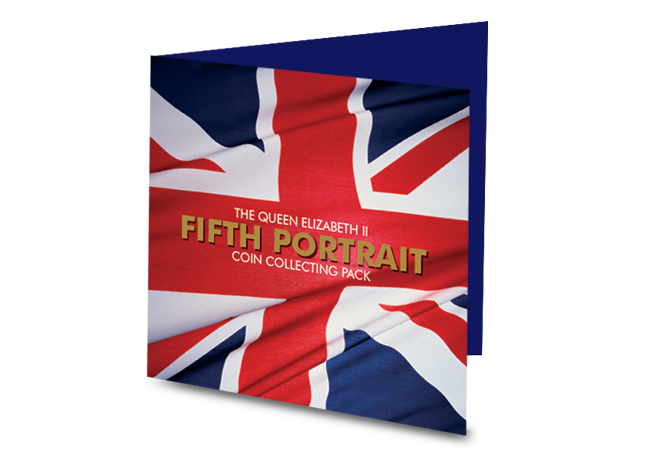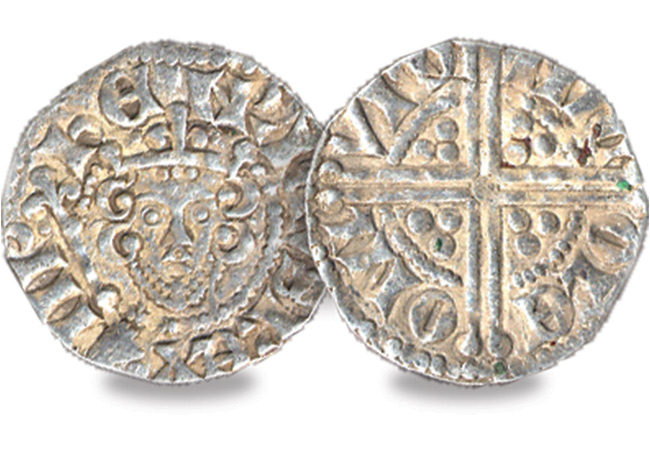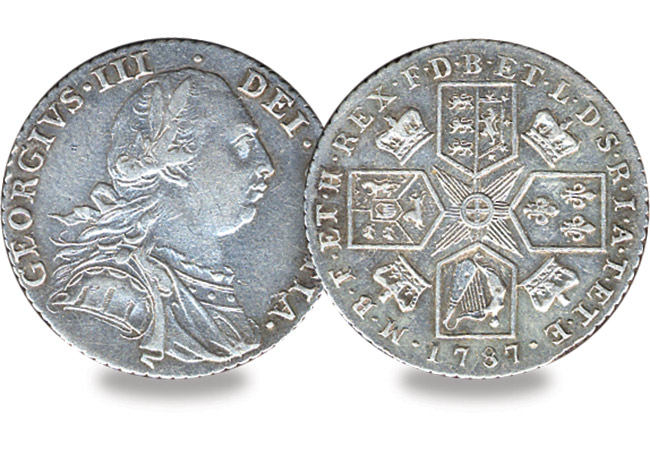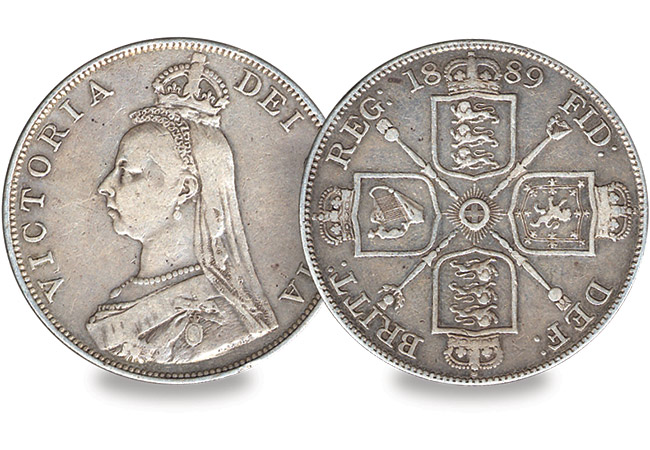Posts Tagged ‘UK Coins’
Portraits of a Queen – which is Britain’s favourite?
With the new portrait of Queen Elizabeth II due to be revealed on Monday, I thought I’d revisit a blog I posted in 2013, which saw the 60th anniversary of the Queen on our coinage.
Back then you voted Mary Gillick’s 1953 portrait of the Queen the best, by a very slim margin. Will the new portrait become the nation’s favourite? Let’s take a look at the previous designs…
The first Queen Elizabeth II coins were struck in 1953 and since then four different effigies adorned our coins.

1953 – 1967: Mary Gillick
The first coins of Queen Elizabeth’s reign bore Mary Gillick’s portrait of the young Queen, engraved especially for the new coins.
Her uncrowned portrait of the Queen is still used on the Maundy Money distributed each year by Her Majesty.
With the upcoming decimilisation, it was decided to refresh the Queen’s portrait with Arnold Machin’s new sculpture of the Queen. Commissioned in 1964, it first appeared in 1968 on the new 5p and 10p coins. A version of the design with tiara was also introduced on stamps in 1967 and remains to this day.
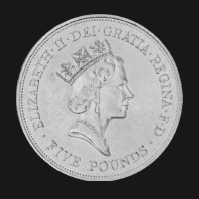
1985 – 1997: Raphael Maklouf
In creating his new effigy of Her Majesty, Raphael Maklouf aimed “to create a symbol, regal and ageless”.
His “couped” portrait depicts Queen Elizabeth II wearing the royal diadem favoured by her on the way to and from the State Opening of Parliament.
 1998 – current: Ian Rank-Broadley FRBS
1998 – current: Ian Rank-Broadley FRBS
The current Queen’s head on our coinage was designed in 1997 by Ian Rank-Broadley. Created to fill the full circle of the coin, its larger size was a deliberate response to the smaller 5p and 10p coins in circulation. A noticeably more mature portrayal of Her Majesty, Rank-Broadley aimed to show the Queen with “poise and bearing”.
If you’re interested…
Collect all 8 of the ‘new portrait’ coins when you find them in your change with The Queen’s New Portrait Coin Collecting Pack. Available now for just £3.99 (+p&p).
Top 5 – Britain’s Most Infamous Coins
British coinage has had its fair share of controversy over the years, but there are 5 coins that really stand out – each with a fascinating story behind them…
1. 1247–1272 Henry III Long Cross Penny
The Clipped Coin
The practice of ‘clipping’ gold or silver coins has long proved irresistible for a few enterprising individuals who want to get more than they deserve for their money. The practice was most prevalent on hammered coins, with their already irregular shape masking the intended deception. A fraudster would clip or shave off a tiny section of a coin, then attempt to pass off the tampered coinage as original.
Over the months, the tiny clippings of gold and silver could well amount to a decent sum, whilst leaving the exchequer out of pocket. Successive monarchs and governments tried to stem the practice, with varying success – the harshest punishment being the death penalty. The Henry III ‘Long Cross’ Silver Penny is one of the most innovative examples of fraud prevention – the traditional short cross design on the reverse of the coin was extended to reach the edge of the coin – immediately making it obvious when a coin had been clipped.
2. 1729–1754 George II Halfpenny
The Hangman’s Wages
How much was a hangman paid? Well, back when Tyburn was one of the most notorious locations in Britain it was 13½d. Situated at the end of what is now Oxford Street near Marble Arch in London, Tyburn was for centuries the home of capital punishment in England. The ‘Tyburn Tree’ – a triangular gallows – was used for executions right up until 1783.
Various sources suggest the Hangman’s fee for an execution was 13 pence, however the actual amount that changed hands was 13½d – the extra halfpenny was for the rope. Two of the most notable executions conducted at Tyburn were James ‘The Gentleman Highwayman’ MacLaine and Oliver Cromwell, whose dead body was exhumed and hanged again as an act of revenge by the Cavalier Parliament.
3. 1787 George III Shilling
The King’s Shilling
It is the stuff of legend that Royal Navy press gangs would try any means to get potential recruits to ‘take the King’s Shilling’ – the signing up bounty for new sailors.
Acceptance of the shilling was deemed to be a commitment to recruitment in the King’s service, and as the dreadful food, harsh labour and risk of death did not appeal to many the coin was often surreptitiously dropped in a ‘free’ pint and handed over, which led to the creation of glass-bottomed tankards.
4. 1849 Queen Victoria Florin
The Godless Florin
For hundreds of years, right up until the present day, Britain’s coinage has been diligently pious – except for one notorious occasion. Each coin features a range of different Latin inscriptions, but all coinage features the full text or an abbreviation of Dei Gratia, Fidei Defensor – ‘by the Grace of God, Defender of the Faith’ – reference to the Monarch’s position as head of the Church of England.
However, in 1849 a new silver coin – the Florin – was introduced and this inscription was left off, with just Victoria Regina 1849 on the obverse. Despite the exceptional design of the coin, there was an immediate outcry from the strongly religious Victorians and the coin gained the nickname ‘the Godless florin’. It was even suggested that an outbreak of Cholera that year was the act of a vengeful God, visiting death upon the British population as revenge for leaving Him off the new coin. Suffice to say, after Queen Victoria herself complained, the coin was replaced, and remains to this day one of the most infamous one-year-only coin designs in British numismatic history.
5. The Barmaid’s Ruin
1887–1890 Queen Victoria Double Florin
Introduced in 1887, the year of Queen Victoria’s Golden Jubilee, the double florin was for many an unwanted addition to British currency. The real reason for its introduction is disputed, nevertheless it became Britain’s second ‘decimal’ coin, just 2mm smaller in diameter than the familiar Crown yet worth a shilling less.
The unintended consequence was that a significant number of unscrupulous rogues tried to pass the coin off as a Crown, with naïve barmaids apparently the most susceptible to the deception. Anecdotal evidence suggests more than a few barmaids lost their livelihood on the grounds that they were losing the tavern owners money, hence the nickname Barmaid’s Ruin.
 Want to secure all five infamous coins today?
Want to secure all five infamous coins today?
The Westminster Collection have a limited number of complete sets available.
NOW SOLD OUT
Royal Mint announces new coin themes for 2015
2015 is set to be something of a momentous year for coin collectors, with five significant anniversaries to be commemorated next year. They are:
£2 – The 800th Anniversary of the Magna Carta
2015  marks 800 years since the signing of the Magna Carta – an agreement which forced King John to abide by the ancient laws and customs by which England had previously been governed. Literally translated as “Great Charter” it laid the foundations for modern democracy and the rights of English citizens. In fact, it is still cited in many legal cases to this day.
marks 800 years since the signing of the Magna Carta – an agreement which forced King John to abide by the ancient laws and customs by which England had previously been governed. Literally translated as “Great Charter” it laid the foundations for modern democracy and the rights of English citizens. In fact, it is still cited in many legal cases to this day.
50p – 75th Anniversary of the Battle of Britain
Perhaps surprisingly, this will be the first time that the Battle of Britain is commemorated on a United Kingdom coin. In the summer of 1940, Nazi Germany was advancing through Europe, but their failure to gain air superiority over the RAF in Britain was ultimately one of the turning points of the war.
£2 – 100th Anniversary of the First World War – Royal Navy
The second design in the series of First World War £2 coins pays tribute to the role of the Royal Navy. At the time, it was by far the most powerful navy in the world and was a major asset to Britain in defending coastal waters against the Germans.
 £5 – 200th Anniversary of the Battle of Waterloo
£5 – 200th Anniversary of the Battle of Waterloo
Also making its debut on United Kingdom coinage for 2015 is the Battle of Waterloo. Fought by the Duke of Wellington and his allied armies against Napoleon Bonaparte of France in 1815, it was a defining moment in European history – ending 20 years of conflict in the continent.
£5 – 50th Anniversary of the Death of Winston Churchill
 There are few Britons more worthy of commemoration than the wartime Prime Minister himself, Sir Winston Churchill. Following his death in 1965 he became the first person outside of the Royal family to be commemorated on a coin, and now, fifty years on, he is being honoured again on a new £5 coin.
There are few Britons more worthy of commemoration than the wartime Prime Minister himself, Sir Winston Churchill. Following his death in 1965 he became the first person outside of the Royal family to be commemorated on a coin, and now, fifty years on, he is being honoured again on a new £5 coin.
Next year the Queen is due to become the longest reigning monarch in British history, and there will soon be a new portrait on our coins to honour her. With the final appearance of the long-standing effigy of Queen Elizabeth II by Ian Rank-Broadley FRBS and five very noteworthy anniversaries, it already looks like 2015 will be a truly landmark year for coin collectors.


